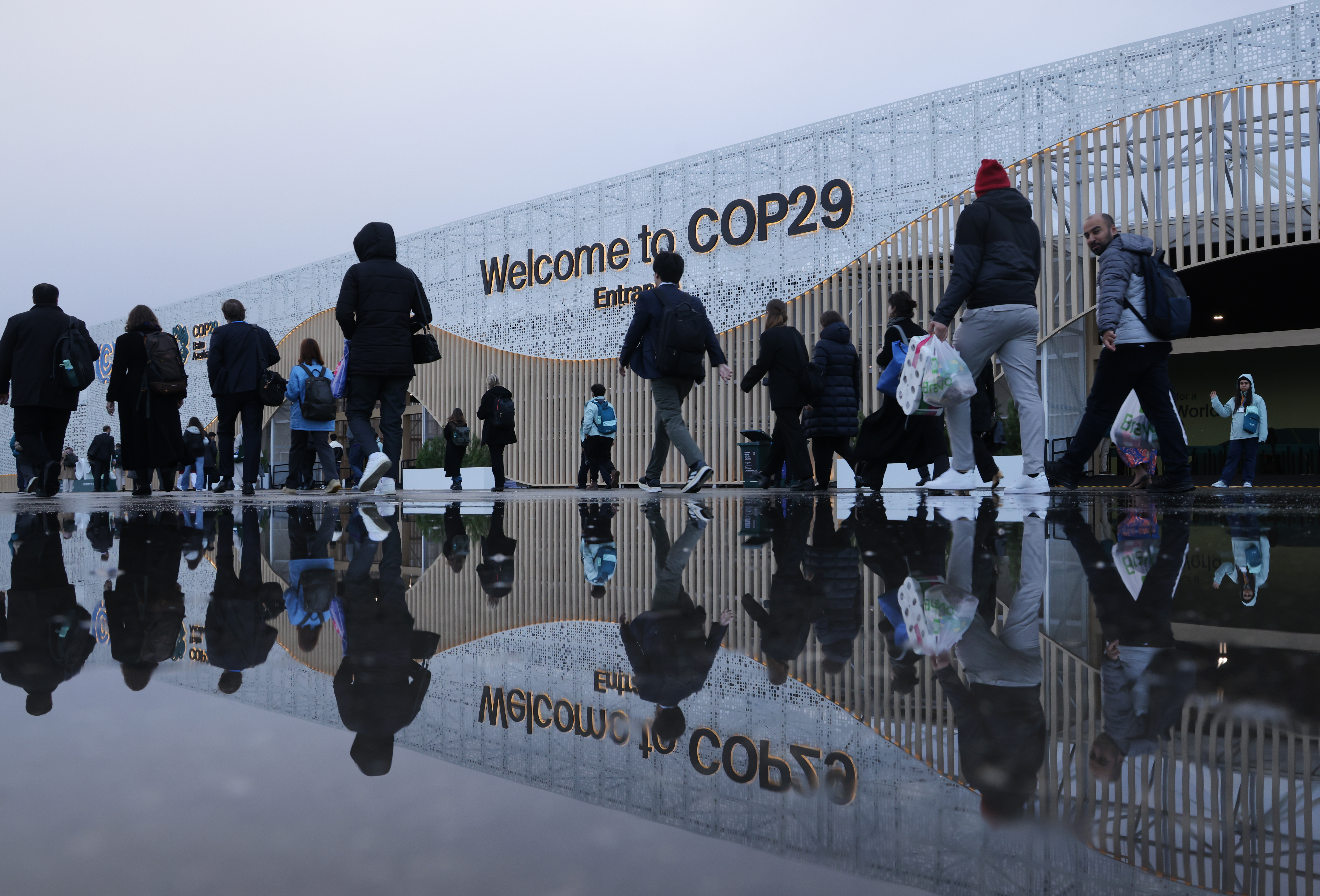The 29th Conference of the Parties (COP29) of the United Nations Framework Convention on Climate Change kicked off last week with a dynamic and sometimes controversial first week in Baku, Azerbaijan. With pressing global climate deadlines looming, the summit has already borne witness to major decisions and ambitious pledges that could affect the trajectory of global climate action for years to come. Here are the five most significant developments.
Red alert – again
On the first day of the conference, the UN’s World Meteorological Organization (WMO) added to the growing scientific consensus that 2024 is on track to become the hottest year in recorded human history, surpassing 2023, which holds the record. WMO secretary-general Celeste Paulo said “this is another SOS for the planet. 2015-2024 will be the warmest 10 years on record”. She added that “the record-breaking rainfall and flooding, rapidly intensifying tropical cyclones, deadly heat, relentless drought and raging wildfires that we have seen in different parts of the world this year are unfortunately our new reality and a foretaste of our future.”
Agreement on international carbon market standards
On day one of the conference a consensus was reached by the parties on standards and rules for the creation of carbon credits. The move was made in line with Article 6.4 of the Paris Agreement, which speaks of “a mechanism to contribute to the mitigation of greenhouse gas emissions and support sustainable development”. Article 6 establishes a framework for a global carbon credit market, allowing for the transfer of greenhouse gas emission reductions or removals between countries. This mechanism is designed to facilitate international cooperation in achieving Nationally Determined Contributions (NDCs) or countries’ plans to reduce emissions and adapt to a changing climate.
Read more: COP29 reaches deal on carbon credit rules, but critics brand it a ‘false solution’
While some activists criticised the move as a “false solution”, the rules were largely hailed as a major step towards operationalising global carbon trading.
Clear focus on climate finance
Dubbed the “Finance COP” by stakeholders, this year’s summit has focused heavily on funding commitments. Negotiators discussed follow-ups to last year’s Global Stocktake and debated whether trade measures should be addressed in Baku.
The “UAE Dialogue”, a critical part of the finance track, aims to translate the Stocktake’s outcomes into actionable strategies. The Africa Group of negotiators has called for a $1.3-trillion annual climate finance target by 2030, with a broader goal of $6.5-trillion overall. These figures underscore the growing divide among negotiating groups over how to address the financial burden of climate adaptation and mitigation.
 World leaders and delegates on day two of the COP29 summit in Baku, Azerbaijan, on 12 November 2024. (Photo: Sean Gallup / Getty Images)
World leaders and delegates on day two of the COP29 summit in Baku, Azerbaijan, on 12 November 2024. (Photo: Sean Gallup / Getty Images)
Energy pledges
On COP29’s “Energy Day”, three new pledges were unveiled: the Global Energy Storage and Grids Pledge, the Green Energy Zones and Corridors Pledge, and the Hydrogen Declaration. The energy storage pledge in particular aims to “increase global energy storage capacity six times above 2022 levels, reaching 1,500 gigawatts by 2030”. This is critical in enabling another of COP’s goals – tripling renewable generation capacity globally.
Taliban at COP
While not a major development in and of itself, the Taliban has made its debut at COP this year. Interestingly for the hyper-patriarchal organisation, the most recent IPCC report has concluded that the inclusion of women “is essential for helping societies cope with increasing extremes”. According to Save the Children, one out of every seven Afghans is facing long-term displacement, the largest number in South Asia and the second highest in the world. The country is also the sixth-most-vulnerable country to the impacts of climate change.
This coming week
The second week of COP29 coincides with the G20 Leaders’ Summit in Brazil, offering a chance to inject momentum into the talks, with South African president Cyril Ramaphosa arriving in the country over the weekend. Negotiators face mounting pressure to secure agreements on the New Collective Quantified Goal for climate finance, reaffirm commitments to triple renewables and double energy efficiency, and accelerate the transition from fossil fuels. DM
https://www.youtube.com/watch?v=REeWvTRUpMk




 World leaders and delegates pose for a family photo on day two of the UNFCCC COP29 Climate Conference at Baku Stadium on November 12, 2024 in Baku, Azerbaijan. The COP29, which is running from November 11 through 22, is bringing together stakeholders, including international heads of state and other leaders, scientists, environmentalists, indigenous peoples representatives, activists and others to discuss and agree on the implementation of global measures towards mitigating the effects of climate change. According to the United Nations, countries made no progress over the last year in reducing global emissions from the burning of fossil fuels. (Photo by Sean Gallup/Getty Images)
World leaders and delegates pose for a family photo on day two of the UNFCCC COP29 Climate Conference at Baku Stadium on November 12, 2024 in Baku, Azerbaijan. The COP29, which is running from November 11 through 22, is bringing together stakeholders, including international heads of state and other leaders, scientists, environmentalists, indigenous peoples representatives, activists and others to discuss and agree on the implementation of global measures towards mitigating the effects of climate change. According to the United Nations, countries made no progress over the last year in reducing global emissions from the burning of fossil fuels. (Photo by Sean Gallup/Getty Images) 